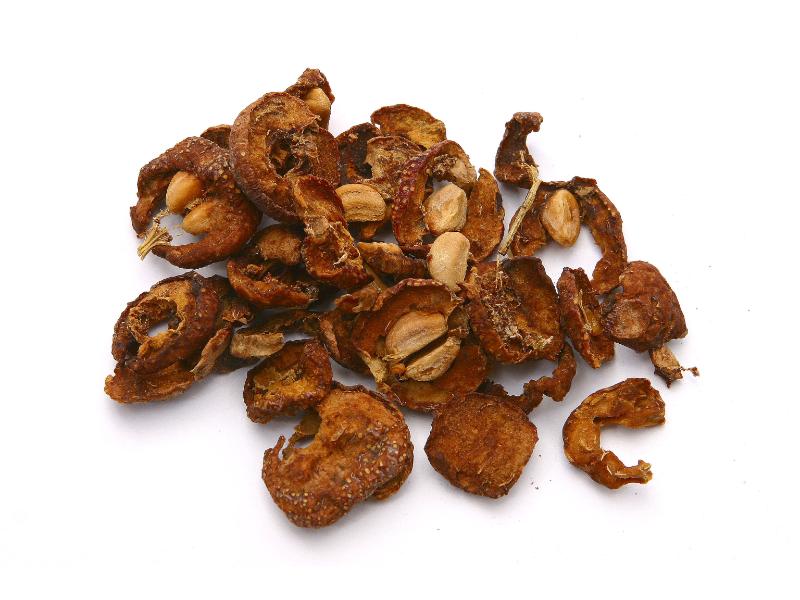Search in medicinals
Crataegi Fructus
Crataegus [fruit]
山楂 〔山楂〕 shān zhā

Alternate English names: haw
Alternate Chinese names: 朹 qiú; 朹子 qiú zǐ; 鼠查 shū zhā; 羊梂 yáng qiú; 赤瓜实 chì guā shí; 棠梂子 táng qiú zǐ; 赤枣子 chì zǎo zǐ; 山里果子 shān lǐ guǒ zǐ; 茅樝 máo zhā; 猴樝 hóu zhā; 山梨 shān lí; 酸查 suān zhā; 山查 shān chá; 山楂肉 shān zhā ròu; 山楂干 shān zhā gān
Kingdom: Plant
Origin in PRC Pharmacopoeia: Crataegus pinnatifida Bge. var. major N. E. Br.; Crataegus pinnatifida Bge. (PRC Pharmacopoeia)
Origin in unofficial sources: Crataegus pinnatifida Bge. var. major N.E. Br.*; Crataegus pinnatifida Bge.*; Crataegus cuneata Sieb. et Zucc.; Crataegus hupehensis Sarg.; Crataegus sanguinea Pall.; Crataegus scabrifolia (Franch.) Rehd.
Use: Medicinal and alimentary
Category: Food-dispersing agents
Properties: Sour, sweet; slightly warm.
Channel entry: Spleen, stomach, and liver channels.
Actions and indications:
- Disperses food and transforms accumulation: Food accumulation and stagnation due to excessive consumption of meat and fat.
- Quickens the blood and disperses stasis: Postpartum abdominal pain due to stasis obstruction; persistent flow of lochia; menstrual pain.
- Moves qì: Dysentery with abdominal pain; painful mounting qì (shàn qì).
- Modern applications: Shān zhā is frequently used in its raw form for the treatment of hypertension, hypercholesterolemia, and coronary heart disease.
Dosage and method: Oral: 10–15g, up to 30g in decoctions. It is often stir-fried before use to treat food stagnation. Use it raw to disperse food or to dispel stasis. Use it scorch-fried or char-fried to check dysentery.
Warnings: Use with moderation in spleen-stomach vacuity.
Product description: Crataegus pinnatifida var. major is spherical or pear-shaped (changing into a small cake shape after pressure has been applied), 1.2 cm in diameter. It has a round depression at the tip, which is black inside, with the remains of sepals at its margins. The exterior surface is red or reddish-brown. Within are five earth-colored seeds. The decocting pieces are 3–5 mm thick slices. The cut edge shows the yellow seeds surrounded by the yellowish-brown flesh of the fruit.
Quality: Large dry fruits with thick flesh and red skin are the best.
Production area: Crataegus pinnatifida var. major: Liáoníng, Jílín, Hēilóngjiāng, Shāndōng, Hénán, Héběi, Shānxī. Crataegus cuneata: Zhèjiāng, Jiāngsū, ānhuī, and Sìchuān.
Etymology: The name shān zhā 山楂 was originally written as 山樝 (山 mountain and 樝 Cathay quince), meaning the mounting fruit with sour astringent taste of the Cathay quince. Another old name is chì mù guā 赤木瓜, red quince.